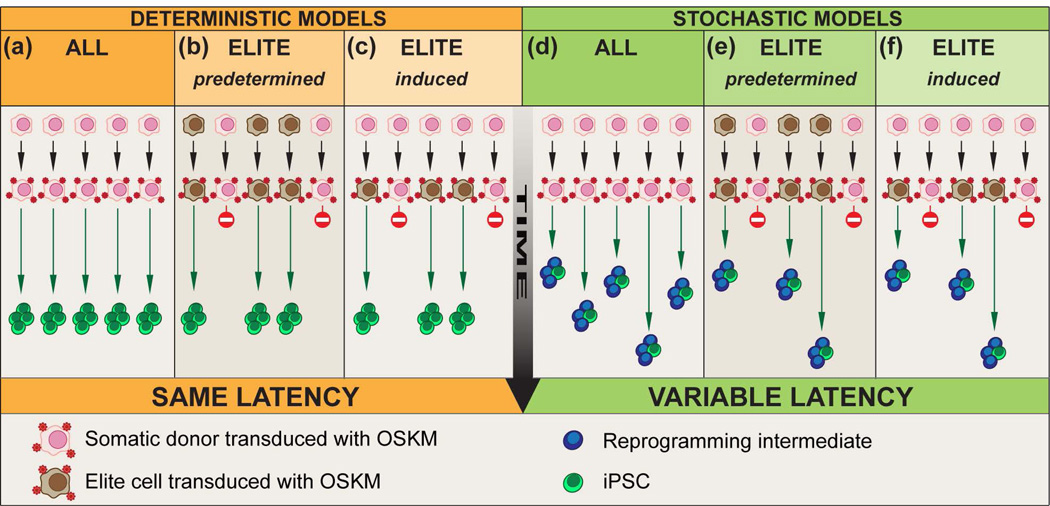Figure 2. Models of reprogramming.
Two types of models have been proposed to describe reprogramming: deterministic and stochastic. (a–c) Deterministic models predict that somatic donor cells give rise to iPSCs with a fixed latency (green arrows of same length). (d–f) Stochastic models predict that somatic donor cells give rise to iPSCs with variable latencies (green arrows of different lengths). In both models, either all (a, d) or only a subset of elite cells (brown) (b–c, e–f) is permissive to reprogramming and elite cells can be present in the donor population before reprogramming (predetermined) (b, e) or induced upon viral delivery (red dots) (c, f). The latency (green arrows) reflects the absolute time or the number of cell divisions required to produce an iPSC from the donor population.

